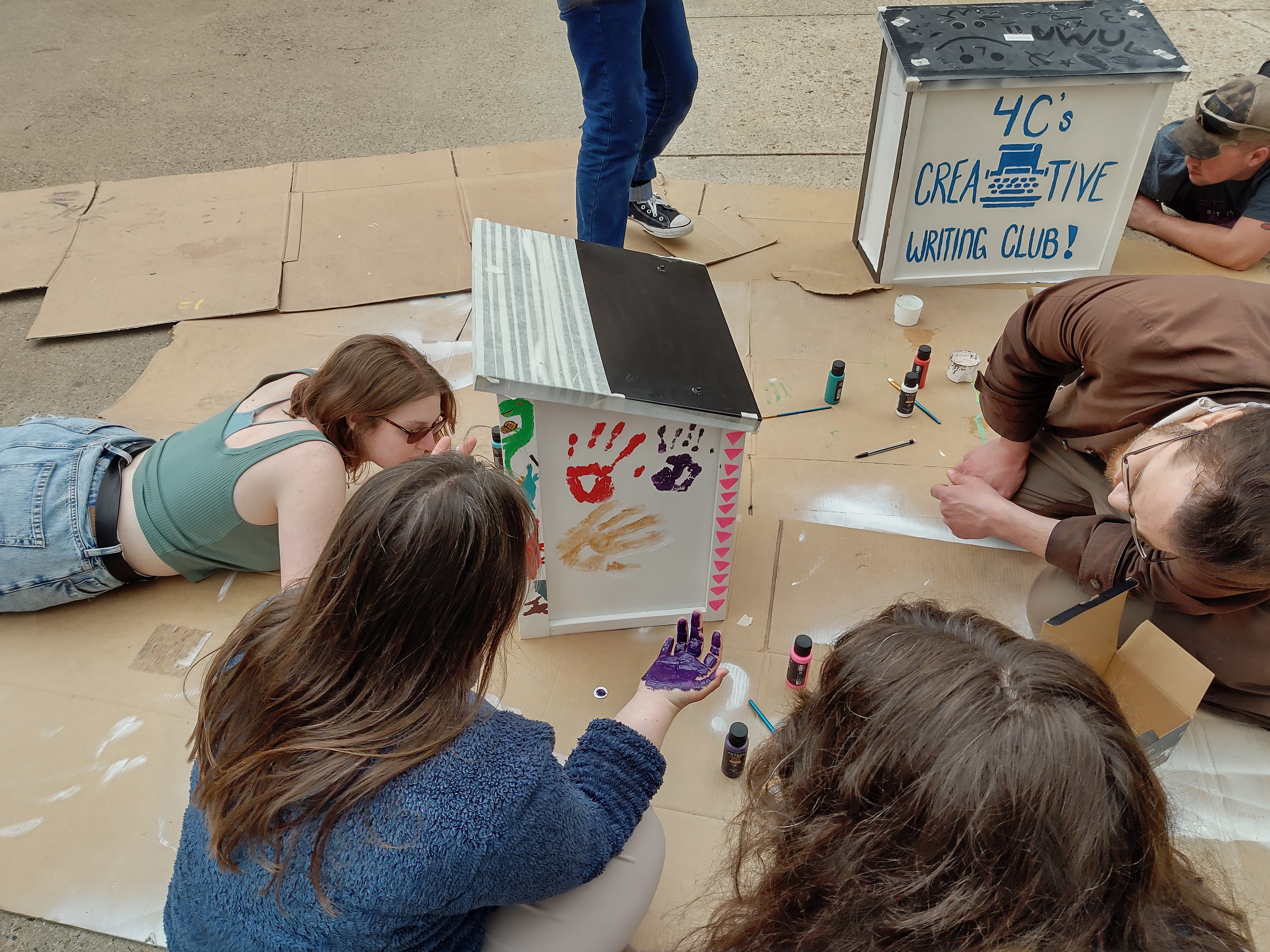Students Explore Craft of Creative Writing
by Olivia Appleton
With the fall semester already on a roll, the 4C’s clubs have begun to take the reign on student life. Among them is the creative writing club. It helps students strengthen their writing as well as giving them a welcoming space. It is entirely voluntary to share one’s work, but those who do can receive constructive response from the club. The group mainly focuses on short fiction, poetry, and non-fiction with creative elements. The creative writing club meets on Wednesdays from 2 to 3:15 p.m.
Daniel Sexton-Riley, the president of the club, is very passionate about the creative writing club.
“A common thread that I’ve noticed is the desire to communicate something that a writer can’t just keep inside,” says Sexton-Riley. “This might be for the world to see, or simply to get something off their own chest with no intent to share it – but that creative expression is cathartic. That’s really where people find value in creative writing.”
Those in the creative writing club, as well as any student, are welcome to submit their work to Sea Change. Sea Change is 4C’s magazine of the arts. It is put together by ENL 170 students. Students who take the class are responsible for creating the final product of the magazine by picking and choosing student work.
“Typically, most members of the club submit a piece to Sea Change if they feel confident in doing so,” Sexton-Riley says. “We encourage anyone who is inclined to share their work to submit something – it's not guaranteed to be accepted, but the potential for publication is always exciting. It feels great to see your words printed if your work is accepted.”
Like the Sea Change, the creative writing club has a big effect on people.
“The best thing most members tend to take away is a greater confidence in their writing, and often in themselves as members of a community,” Sexton-Riley says. “The process of peer critique can be a little intimidating at first, but the results are very much worth the effort. Our peers can always point out interesting areas for development and places to experiment with the craft of writing. For those who feel able, there’s also the option to read your work aloud in club meetings – again this can be scary at first, but it’s so gratifying to finish your reading and have the club support you.”

Creative writing club. (Daniel Sexton-Riley)
Categories: Featured, Clubs